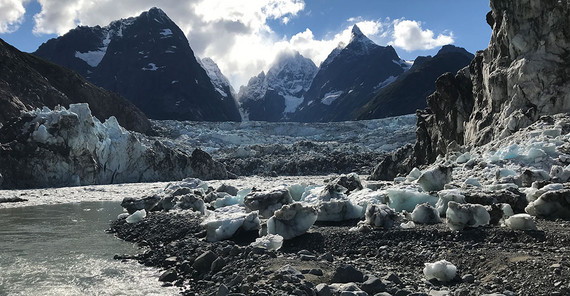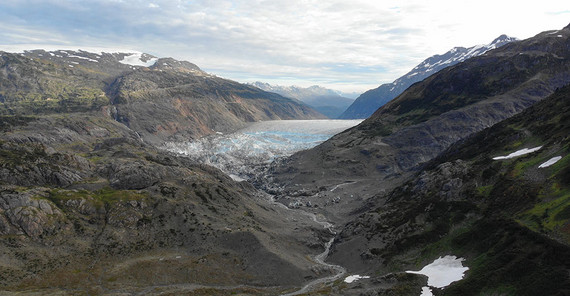Glaciers can accumulate water from precipitation and glacial melt at their margins, occasionally becoming unstable. The pent-up water can then be released in catastrophic glacial lake outburst floods. Predicting these floods is difficult, which is why they have repeatedly claimed lives, destroyed infrastructure and farmland, and blocked major transportation routes for months. “We wanted to find out if accelerated glacial melt in recent decades could have changed the size, timing and elevation of these lakes,” explains geomorphologist and lead author of the study, Dr. Georg Veh. “Since 1900, more than 1,500 glacial lake outbursts have been recorded worldwide, the largest mainly in the Andes and northwestern North America, including Alaska and British Columbia. We have characterized these outburst floods based on water volume, peak discharge, timing and source lake elevation, allowing us to estimate their evolution over time.”
In their analysis, the researchers were able to show a trend: Outbursts from ice-dammed lakes decreased in terms of volume and peak discharge. Glacial lake outburst floods now occur about eleven weeks earlier in the high mountains of Asia than in 1900, followed by the European Alps at ten weeks and northwestern North America at seven weeks earlier. “Lake Gornersee in Switzerland, a European example of a glacial lake with repeated outbursts, floods about four months earlier in the year today than it did at the beginning of the 20th century,” says Veh. “Knowing these temporal changes could provide useful information, for example, to temporarily close roads or bridges along rivers to prevent damage.” The team also found that lakes with documented outbursts have “migrated” to higher elevations. Lakes dammed by glaciers in the Andes, Iceland and Scandinavia are now on average 250 to 500 meters higher than they were 120 years ago.
Atmospheric warming will likely play an important role in the melting and thinning of glacier dams, and could eventually lead to the disappearance of glacier-dammed lakes altogether. A number of regions with small glaciers, such as the European Alps, Scandinavia, and British Columbia, could become mostly ice-free as early as the end of the 21st century. Other regions, such as Patagonia and Alaska, could still have large glaciers beyond 2100 and therefore continue to be able to impound meltwater. The authors recommend that, in these regions, lakes dammed by glaciers should be closely monitored and downstream river sections should be equipped with early warning systems to prevent or at least mitigate future disasters.
Link to publication: Georg Veh, Natalie Lützow, Jenny Tamm, Lisa V. Luna, Romain Hugonnet, Kristin Vogel, Marten Geertsema, John J. Clague & Oliver Korup: Less extreme and earlier outbursts of ice-dammed lakes since 1900, Nature, https://www.nature.com/articles/s41586-022-05642-9
Image:
Lake_No_Lake_Georg_Veh_4: Lake No Lake is a lake in British Columbia (Canada), dammed by the Tulsequah Glacier in the background (estimated height 150-200 m), which empties several times a year. In the 1990s, this lake, when full, held a volume of over 700 million cubic meters of meltwater. This photograph shows the lake almost completely emptied on 9/16/2022 with icebergs left on the lake bottom. Photographer: Georg Veh (University of Potsdam)
Salmon_Glacier_Natalie_Lützow: Salmon Glacier (British Columbia, Canada) dams Summit Lake, which has broken out at least once a year since the 1960s. This drone image from 9/21/2022 shows the lake empty, with the last icebergs on the lake bottom. In recent decades, the lake's extent has steadily decreased. As recently as the 1990s, the lake also filled the front left section of the image, which is now already covered with the first pioneer vegetation. Photographer: Natalie Lützow (University of Potsdam)
Contact:
Dr. Georg Veh, Institute for Environmental Sciences and Geography
Tel.: 0331 977-5875
Email: georg.vehuuni-potsdampde
Media Information 15-02-2023 / No. 021


